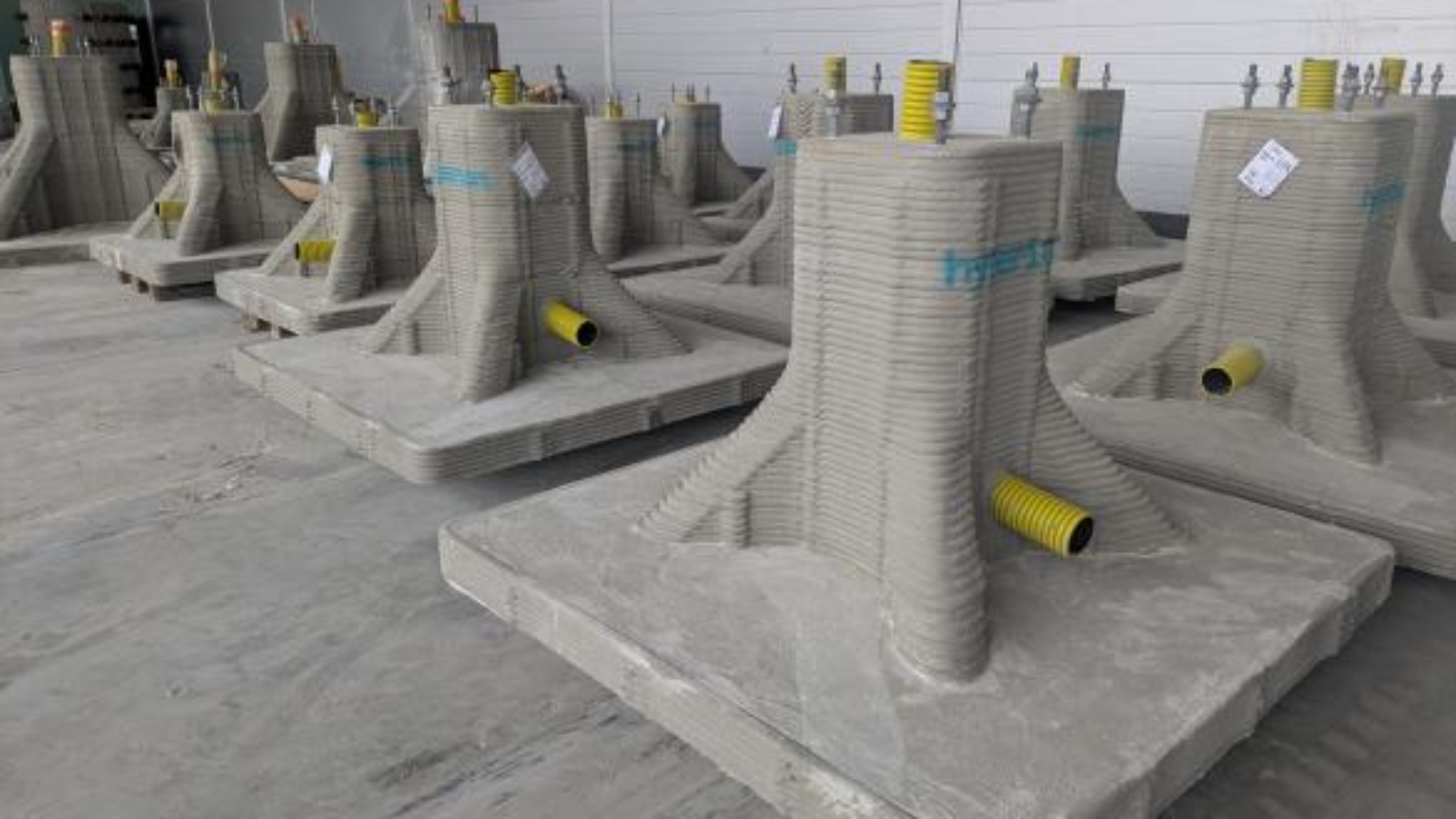National Grid, a British multinational electricity and gas utility company, is working with Hyperion Robotics, a 3D concrete printing company, and the University of Sheffield on a UK-first trial to manufacture, install, and test 3D printed substation foundations, which have the potential to reduce construction-driven carbon emissions and reduce costs to consumers of network construction. This is part of National Grid’s commitment to leverage innovation to future-proof the network.
If the project is successful and the technology is rolled out across all National Grid substations, it is estimated it could save up to 705 tons of concrete and 323 tons of CO2 over 10 years, and deliver £1.7 million in consumer savings versus traditional methods.
The foundation design will deliver significant savings across the entire value chain, including: a 70% reduction in concrete usage; 80% less soil displacement; a 65% decrease in embodied carbon emissions; a 70% weight reduction compared to typical foundations; and a 50% reduction in site operative hours.
Manufacturing on Demand
The foundations will be designed and produced in Finland by Hyperion Robotics and tested at full-scale by the University of Sheffield. Further field testing will then be carried out at National Grid’s state-of-the-art testing facility, the Deeside Centre for Innovation in North Wales, later in 2025.
“Our collaboration with Hyperion Robotics is a real step forward in achieving more innovative construction practices, which align with our bold and ambitious commitments on sustainability. This trial of low-carbon 3D printed alternatives to concrete for substation foundations is the first of its kind in the UK, and has the potential to transform construction activities across the industry. The project has been funded by Ofgem’s Network Innovation Allowance, which provides an allowance to energy network licensees to fund innovation projects that have the potential to deliver longer-term financial and environmental benefits for consumers,” said Dr. Muhammad Shaban, Lead Innovation Engineer at National Grid Electricity Transmission.
“Collaborating with National Grid, one of the world’s largest utility companies, marks a pivotal moment for Hyperion Robotics as we advance our mission to help the industry build smarter and greener. This partnership accelerates our efforts to decarbonise the construction sector through cutting-edge engineering and low-carbon 3D printed concrete structures. Through this collaboration, National Grid is setting an inspiring global benchmark for innovation and sustainability in the energy sector,” said Fernando De los Rios, Founder and CEO of Hyperion.
“We are delighted to be collaborating with Hyperion Robotics and National Grid on this innovative project. To ascertain the load-bearing capacity of the 3D printed concrete foundations, we will conduct full-scale testing using state-of-the-art engineering testing facilities at the Intelligent Infrastructure Laboratory located at ICAIR, the Integrated Civil and Infrastructure Research Centre at the University of Sheffield,” said Dr. Behzad Nematollahi, Deputy Lead of the Structural Engineering Research Group at the School of Mechanical, Aerospace and Civil Engineering at the University of Sheffield.
You might also like:
Progress Group introduces SPI process for advanced construction 3D printing:
* This article is reprinted from 3D Printing Media Network. If you are involved in infringement, please contact us to delete it.
Author: Edward Wakefield


Leave A Comment